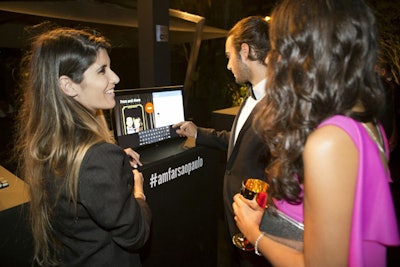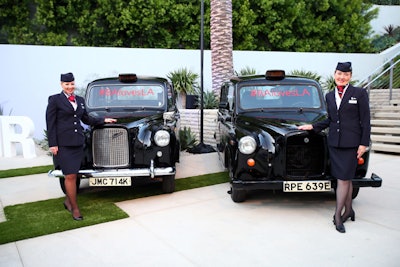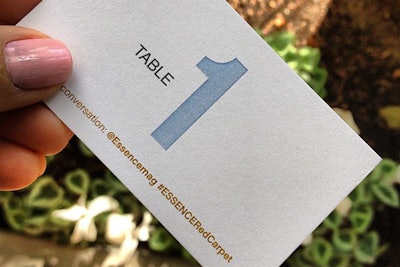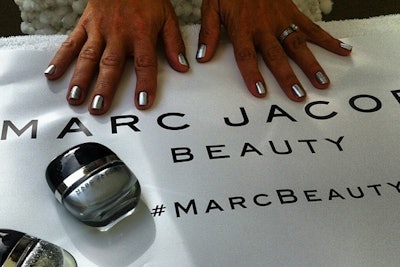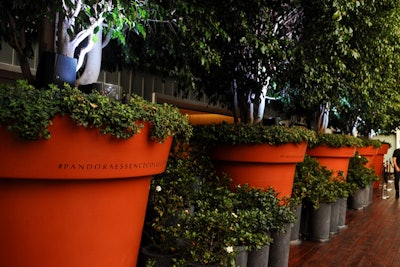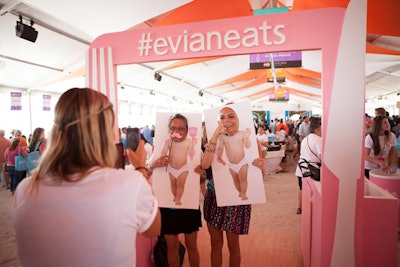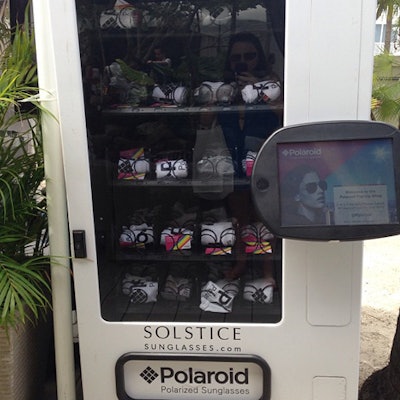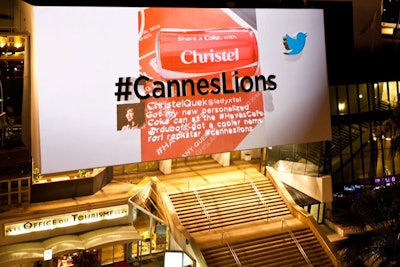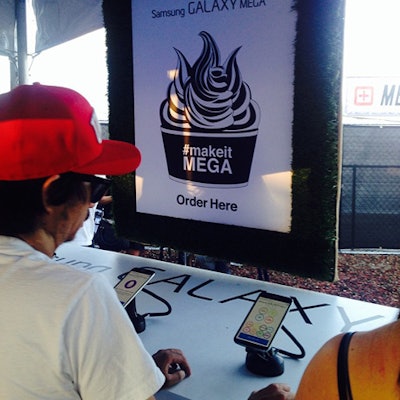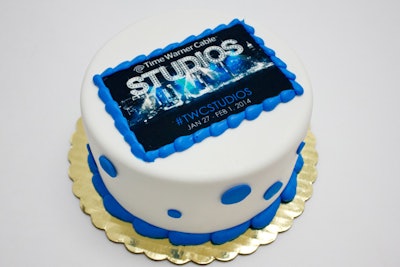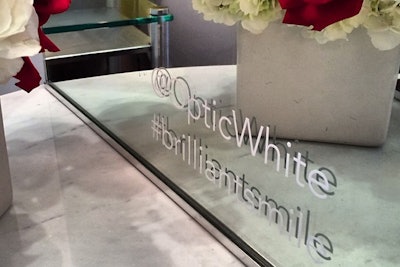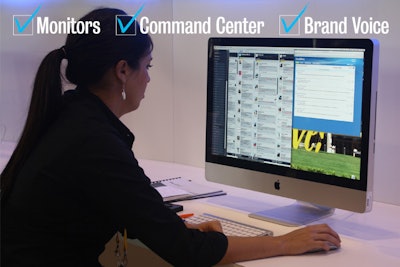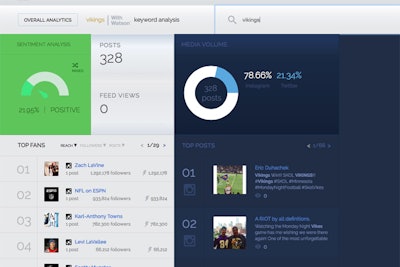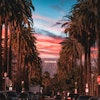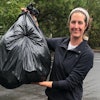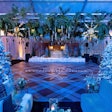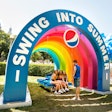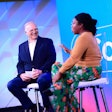
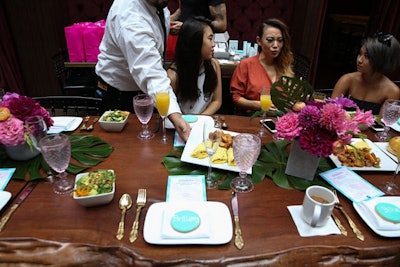
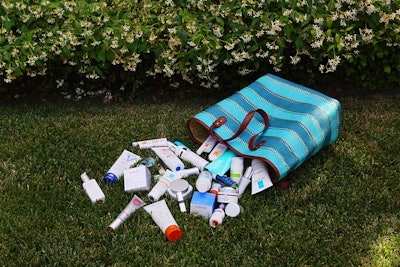
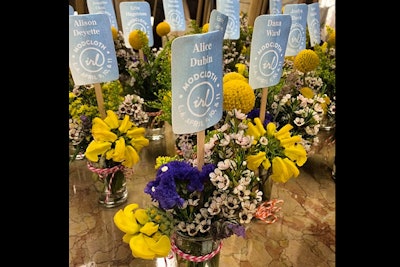


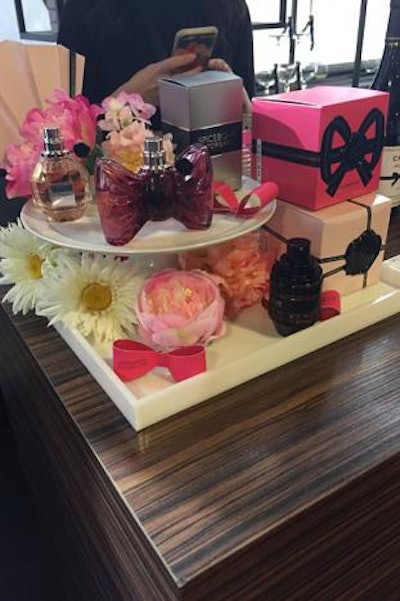

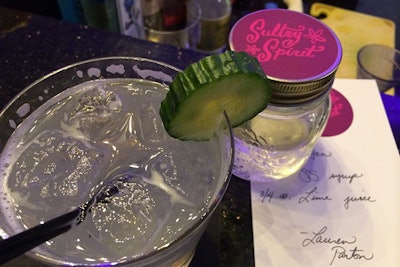
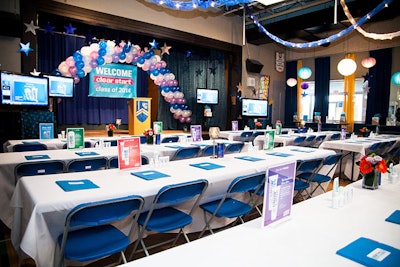
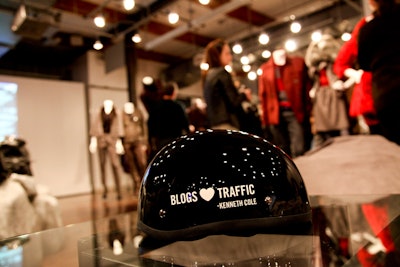
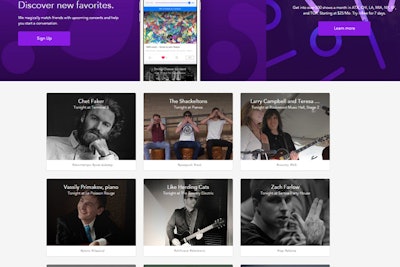
Jukely Unlimited describes itself as the "Netflix of concerts." For $25 per month, users can attend one free show per day in their area. The system, accessible on the Web and via a mobile app, currently includes listings in New York, Los Angeles, San Francisco, Austin, Texas, Miami, Chicago, Seattle, and Toronto, with plans for more cities in the coming months. Users can sync their music libraries with the app so it can recommend concerts based on individual tastes; over time it also recommends concerts similar to ones the user has attended. The app also shows friends who are going to a show and allows users to earn points toward free concert tickets by inviting friends to events.

Surkus is an app to help brands, planners, and venues find the right people to attend their events, whether for product launches, brand activations, or red carpet parties. The concept is known as “crowdcasting,” and Surkus chief creative officer Jin Yu says the hope is to make the app the “Uber of curating your exact crowd.” Event hosts use the system to indicate the number and type of guests they are looking for based on interests, demographics, or social media reach. Those interested in attending events create a profile by linking their Facebook account. The system analyzes that person’s likes, friends, interactions, and hashtags and sends them notifications of upcoming events based on that data. Guests are paid a fee to attend, ranging from $5 for Playboy's recent high-profile Super Bowl party to more than $100 for less popular events. The app’s geofencing system automatically checks guests in and out of the event, which allows organizers to see if they stayed the minimum amount to receive payment. In addition to requiring guests to remain on site for a set time, hosts can also require mentions on social media, for example using a hashtag or posting a specific image. Surkus pays the guests via PayPal within 30 minutes of the completion of the event, and then a final bill is sent to the event host. After the event, Surkus sends the organizer a report with pictures of those who attended, their average time on site, and their combined social media reach. Surkus is available for iOS and Android.
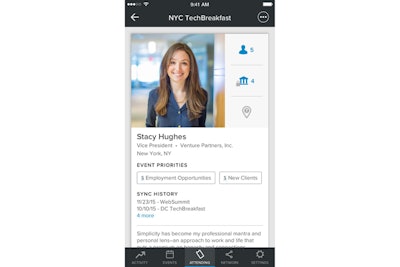
SummitSync is a new iOS and Android app focused on networking. Users log in with their LinkedIn account, select the conferences they will attend, and then anonymously swipe right (interested) or left (not interested) when profiles of other attendees appear. When a mutual connection is made, the two users can message each other in the app to schedule a meeting. Planners can configure the app to ensure that only registered attendees can use the system. They can also sell ads in the app and keep the revenue. SummitSync integrates with email, calendar tools, and customer relationship management systems. In the next few months, an update will allow organizers to add event agendas and floor plans to the app.

Gjests (pronounced “yasts”) is the Norwegian word for guest. The Web and mobile app launched in beta in July and will be available to everyone in March. Organizers use the Web platform to create their events by adding information such as the event name, location, time, capacity, information for a confirmation email to guests, and whether it is public or private. Hosts also upload their guest list, either manually or by linking an existing list, and then the system sends out invitations. At the event, organizers can use the Gjest mobile app to add guests, scan barcodes to check guests in, and receive notifications when the event is at capacity or when specific guests arrive (for example a V.I.P.). By March, planners will be able to create their events in the app, and the system will also add ticket sales management and the ability to be used in offline mode. Gjests is available for iOS and Android.

Konvene is an iOS and Android app for managing, promoting, and finding events. Hosts create their events in the app, adding information such as description, location, whether it is public or private, and tags such as "meeting" or "birthday party." If the event requires a ticket, the app can manage payments and check-in. Guests can use the app to find events, view the guest list, chat with other attendees, post pictures, or provide a post-event rating of their experience.
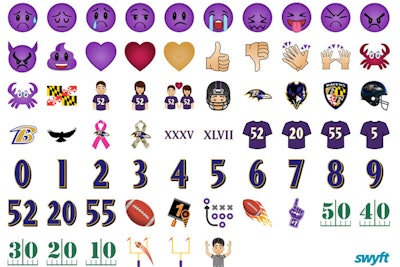
Event pros can generate buzz leading up to and surrounding an event with custom emoji. New York-based Swyft Media has been creating custom sets since 2012. Acquired by Monotype early last year, the company frequently works with companies and entities to come up with on-message emoji.
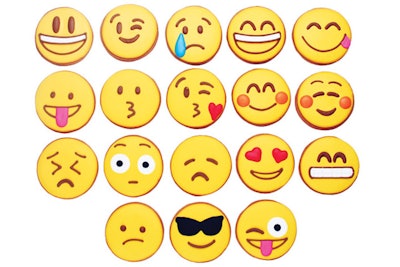
New York-based Eleni's Cookies is among the catering providers incorporating emoji into food presentation. Cookies that imitate the widely recognized happy face emoji are obvious crowd pleasers—and they can be customized with corporate messaging.

Beyond dotting furniture with emoji pillows, organizers can find other ways to add physical representations of the digital icons to the decor. At its Streamy Awards party, Fullscreen hosted a millennial-heavy crowd. In a conceptual twist, Caravents created so-called “emojis in the wild”—accompanied by a well-promoted hashtag of the same phrase—which involved small animal figures placed within the decor throughout the space. The move was meant to encourage guests to share their subtle observations.
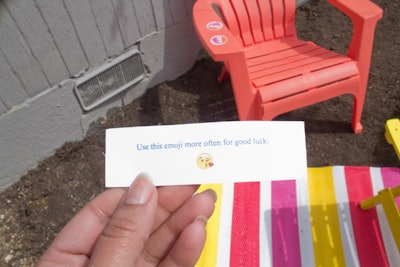
At South by Southwest in Austin, Texas, last year, BuzzFeed's BFF Clubhouse offered an emoji fortune-teller. By looking at the most recently selected emoji on guests’ own smartphones, the fortune-teller picked the person’s fortune. The slip of paper, similar to one found in a fortune cookie, included an emoji recommended for guests to use more.
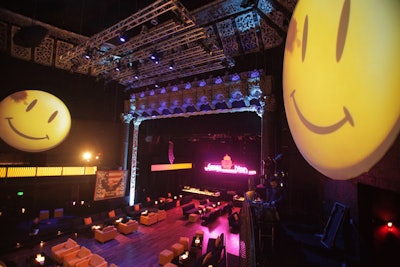
When the Watchmen movie premiered in 2009, emoji were not yet a part of the public consciousness. However, the Los Angeles premiere party’s animated video effects suggested a way to use modern-day emojis: Happy faces lit up two 15-foot circular screens for a larger-than-life audiovisual effect.
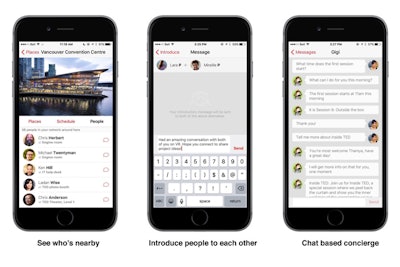
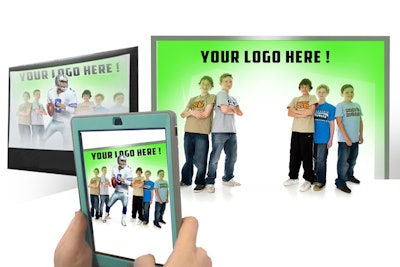
Create a virtual celebrity photo opportunity with Air Graffiti Dallas’s new augmented reality technology. The new system, which launches this summer, is intended for brands that are looking for ways to leverage their celebrity endorsement contracts. Air Graffiti Dallas shoots a brief video of the celebrity in advance, for example, walking into the shot, waving, or bouncing a ball. At the live event, fans stand in a designated photo area, and the video of the celebrity is virtually added to the image. Guests receive copies of the images, which can include sponsor branding, to share via email, text, or social media.

Photoboxx is a social media printing station for parties and events. When guests post their photos to Twitter or Instagram using a designated hashtag, the Photoboxx printer automatically prints a hard copy. Hosts can customize the background color of the prints and also add graphics or logos. They can also choose whether to display or hide information such as username, profile image, and comments. After the event, Photoboxx provides a report on hashtag usage, impressions, and reach.

The SloMo Lounge from Air Graffiti Dallas turns four seconds of video into a 30-second slow-motion playback. The system uses a high-speed, high-definition camera to record guests interacting with one another and with quirky props so the playback can reveal funny facial expressions. Guests receive a copy of the video, and they can select stills from it to print on site; all the content is shareable via email, text message, or social media. The activation can be set up in a 10- by 10-foot area and can be done with a plain white, black, or green screen backdrop.
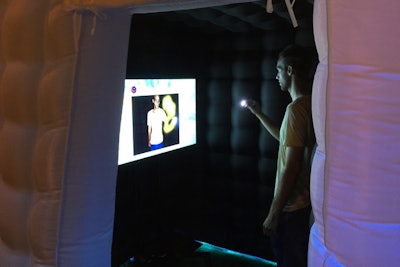
Add a splash of bright colors to event photos with the Neon Video Booth from Foto Master. Guests stand in front of a dark backdrop and use an LED spray can or pen to create virtual doodles. A camera in front of the guests uses an algorithm to detect and track the LED light. The resulting image of guests and their artwork can be saved as a video or turned into photos, GIFs, or flip books, all with brand logos and messages. Hosts can choose the color and size of the neon pen.
